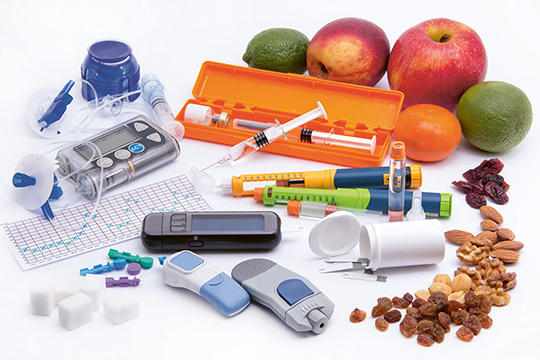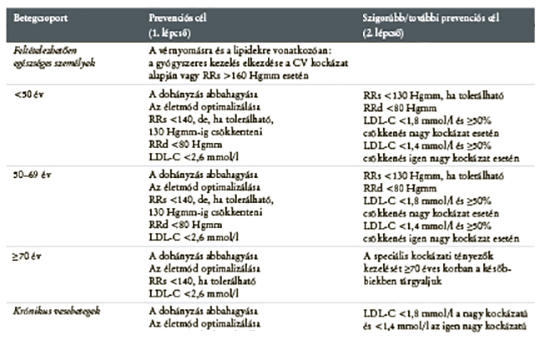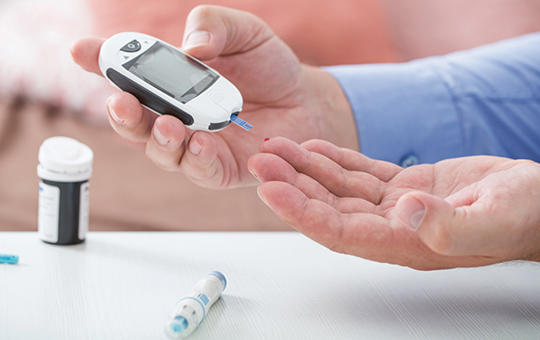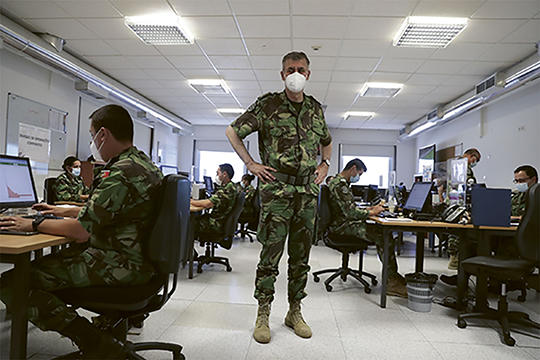The eLitMed.hu medical portal uses computer cookies for convenient operation. Detailed information can be found in the Cookie-policy.
Lege Artis Medicinae - 2021;31(12)
Content
[100 years of insulin]
[Insulin is 100 years old. Concerning this anniversary, this study reviews the main events before and after the insulin era, the wider range of insulin products and the chronology of main clinical innovations related to the insulin administration. It also presents the history of related devices as delivery pens, insulin pumps and automated treatment systems. It points out that, although insulin dosing is an external replacement for missing or insufficient endogenous hormone production as related to the actual demand, it is to this date the general treatment available for all types and stages of this condition.]
[Patient education and insulin treatment]
[Therapeutic patient education is a lifelong educational activity. As an approach focused on the needs, values and therapeutic strategies of patients, it promotes an increase in patients’ knowledge and skills according to the disease, results in a better quality of life, increased therapeutic compliance and a decrease of complications. Patients become partners and health care providers become coaches. Many type-2 diabetes patients refuse insulin therapy, even when this modality of treatment is indicated. This paper aims to explore diabetic patients’ reasons of accepting insulin therapy and the initial barriers to its use, as well as related education requirements.]
[Insulin: alfa and omega]
[Type 1 diabetes (T1DM) is caused by the autoimmune death of insulin-producing β-cells. In the background there is by all probability the primary antigen (if the theory of primary antigen is correct) the insulin itself or the proinsulin. However, treatment of T1DM is virtually equivalent to the insulin treatment. The earlier we recognize T1DM and start treatment, the better glycaemic results we achieve, the more likely we can maintain all functional β-cell stocks. Insulin also plays a key role in the immunopathogenesis, development and treatment of T1DM, thus insulin is the alpha and omega in this condition.]
[Modern insulin therapy using insulin pump or insulin pump and sensor]
[Insulin was discovered 100 years ago. At this anniversary the present study concerns the applications of insulin pumps and sensors, emphasising the latest options in Hungary. Since January 1, 2020 the above devices are provided with 98% coverage by the National Health Insurance Fund for underage Type 1 diabetics and high school students up to 24 years. Adults with Type 1 diabetes may also obtain an insulin pump and sensor with 80% coverage of the social health insurance. A sensor distributed by an independent local company will also be available in the upcoming months. It should be suggested that more and more unstable Type 1 diabetics use the insulin pump and sensors since this treatment stabilise the metabolism reduces the glucose level excesses and minimise the glucose variability. All these measures are lowering the probability of diabetes related complications.]
[Cardiovascular prevention 2021 – Guidelines of European Society of Cardiology 2021. Cardiovascular prevention at individual level]
[In August 2021, the European Society of Cardiology (ESC) published its practical guidelines for cardiovascular prevention. In Part 1 of our publication, we discussed cardiovascular risk factors, risk assessment, cardiovascular risk assessment in presumably healthy individuals of different ages, people with proven atherosclerotic cardiovascular disease, people with diabetes mellitus, and factors influencing risk. In Part 2, conditions that influence cardiovascular risk were detailed. In the current Part 3 of this publication, we review personalised cardiovascular prevention, non-pharmaceutical and pharmaceutical treatment of specific risk factors, emerging treatment options, and participation in cardiovascular rehabilitation and prevention programmes based on ESC guidelines.]
[Europe’s highest COVID-19 mortality experienced behind the former iron curtain]
[While 11 out of the 15 first European countries with highest COVID-19 mortality rates are Post-Socialist countries (73%), and only 9 out of the 31 countries on place 16-46 (29%) are Post-Socialist. All of the top 17 European countries with the highest cumulative excess-mortality since the beginning of the COVID-19 pandemic era, are Post-Socialist countries (100%) as well as 19 out of the top 20 (95%). The dividing line between high and low COVID-19 mortality of European countries follows exactly the path of the former Iron Curtain. In addition, out of the 43 data reporting European countries, all the 18 with the lowest vaccination rate (100%) are Post-Socialist. The main cause of these differences in European COVID-19 mortality may be the traditionally disadvantageous physical and mental condition of the population of Post-Socialist countries, but this problem needs further, more intense investigations.]
[Self-monitoring of blood glucose in type 2 diabetes]
[Self-monitoring of blood sugar levels is an essential element in the treatment of diabetes, it provides an insight to the success of treatment and self-management, the development of metabolic processes, and ensures the early recognition and treatment of significant blood sugar fluctuations. The aim of this study was to evaluate the habits of self-monitoring of sugar levels in patients with type 2 diabetes, and among them the frequency, recognition and treatment of hypo- and hyperglycemia. The research was conducted as a cross-sectional study in 2018 in the Health Centre in Subotica/Serbia. The sample included 107 patients diagnosed with type 2 diabetes. Data were collected through interviews with patients using a customized questionnaire, during the regular control examinations. The patients’ level of blood sugar in the capillary blood was measured by glucometer. The statistical package IBM-SPSS 20.0 and descriptive analytic methods were used for data analysis. The mean age of the sample was 63.7 ± 7.7 years. Two-thirds of them performed opportunistic self-monitoring mostly before breakfast. A large number of patients never recognized variations of blood glucose (in 65% hyperglycemia and in 51% hypoglycemia). However, a month before 81% of patients had hyper- and 31% hypoglycemic episodes respectively. 12% of patients did not take any action in such cases. It is recommended to emphasize again and again the importance and way of self-monitoring at each follow-up examination. The shortcomings identified in the study provide guidelines what to focus on when caring for diabetic patients.]
1.
Clinical Neuroscience
Is there any difference in mortality rates of atrial fibrillation detected before or after ischemic stroke?2.
Clinical Neuroscience
Factors influencing the level of stigma in Parkinson’s disease in western Turkey3.
Clinical Neuroscience
Neuropathic pain and mood disorders in earthquake survivors with peripheral nerve injuries4.
Journal of Nursing Theory and Practice
[Correlations of Sarcopenia, Frailty, Falls and Social Isolation – A Literature Review in the Light of Swedish Statistics]5.
Clinical Neuroscience
[Comparison of pain intensity measurements among patients with low-back pain]1.
Clinical Neuroscience Proceedings
[A Magyar Stroke Társaság XVIII. Kongresszusa és a Magyar Neuroszonológiai Társaság XV. Konferenciája. Absztraktfüzet]2.
3.
Journal of Nursing Theory and Practice
[A selection of the entries submitted to the literary contest "Honorable mission: the joys and challenges of our profession" ]4.
Journal of Nursing Theory and Practice
[End of Life and Palliative Care of Newborns in the Nursing Context]5.
Journal of Nursing Theory and Practice
[Aspects of Occupational Health Nursing for Incurable Patients ]














